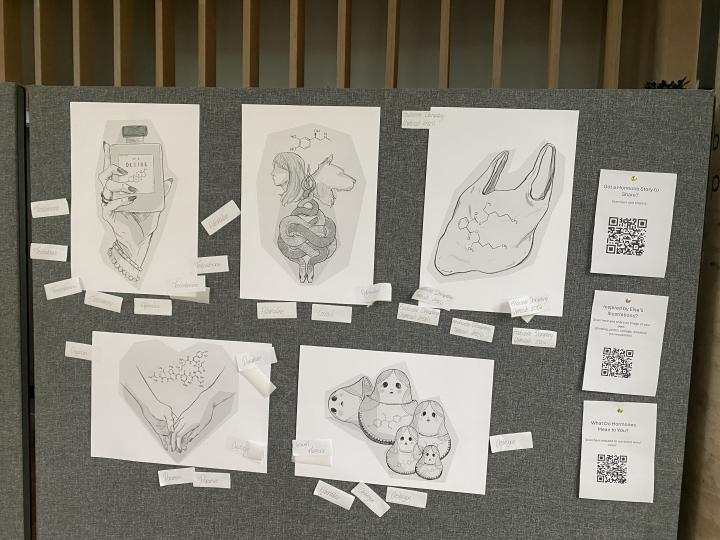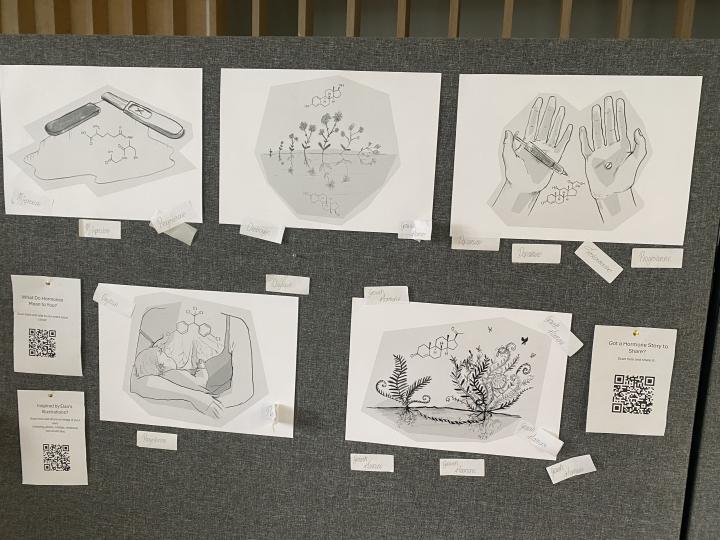Hormonal Stories at PeopleFest, Manchester
Hormones permeate every sphere of our lives. Some of them have reputations -- social personas, you could say -- while others go unnoticed and unrecognized. Anything one does with a body (which is to say most everything) is influenced by hormones. In turn, what we do and how we live alters how our hormones work.
The four of us are fascinated by hormones. We -- Andrea Ford, Research Fellow in CBSS, Lisa Raeder, PhD candidate in CBSS, Sone Erikainen, former CBSS postdoc (now at the University of Aberdeen), and Malcolm Roslyn, who was connected with CBSS during her PhD (now at the University of Durham) -- met through CBSS four years ago we and started a ‘hormones hub’ of projects we worked on together, including books, articles, and events where we could explore hormones further.

In April this year, hormonal stories filled Manchester’s HOME theatre, where we hosted an event for ‘PeopleFest’. Instead of a traditional academic conference, the Association of Social Anthropology of the UK and Commonwealth decided to hold a festival this year, to highlight and share the work of anthropologists. In the light-filled room overlooking a hip district of the city, we hung well over a dozen illustrations from our most recent book, Hormonal Theory: A Rebellious Glossary, and invited people to roam around with coffee, pastries, and ‘labels’ of different hormones. The drawings, made by the talented Elsa Paulsen, illustrate different chapters of the ‘glossary’ wherein a given hormone is shown to be both biological and social, both a character in its own right and part of complex cascades that can’t be disentangled. Although they were associated with a particular hormone in the volume, there was no ‘right’ answer and we loved seeing how people associated the hormones and images.

After meandering for a while, we gathered everyone into seats – arranged in a fluid sort of spiral, there was no ‘front’ of the room or ‘stage’. One of us read a paragraph or two from the book Hormonal Theory: A Rebellious Glossary, which in every instance was followed by an animated discussion. People shared stories from the way adrenaline can fuel a night of studying or build up in a feminine or non-binary body over a lifetime of vigilance, to the way pharmaceutical hormones are prescribed so differently in different countries; from the ‘phytoestrogens’ in soy and their gendered connotations, to the way medical ‘patient information leaflets’ could be so much more honest and useful about the social effects of drugs.
‘Hormonal stories’ has been a theme of our work, one that can move between theoretical sophistication and accessible spaces for engagement, indeed showing these are not as separate as we sometimes think.

